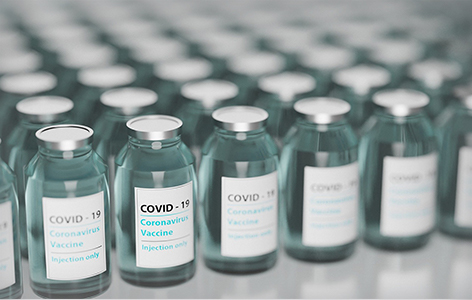
By: Laura Aronoff, ORT Science Writer
The end of 2020 brought some exciting news with Health Canada approving the two-dose Pfizer-BioNTech and Moderna COVID-19 vaccines for emergency use, allowing Canada to begin vaccinating the nation. Developing, testing and obtaining regulatory approval of a vaccine in under one year is no easy task. So how was it done?
Conventional vaccines
Vaccines are a medical success story in disease prevention. Traditional vaccine technologies use all or part of a weakened (attenuated) or killed pathogen to generate an immune response and train your immune system without actually causing disease. Growing large amounts of viruses and weakening or extracting certain components is a laborious process and can take years to develop and get approval for new vaccines.
Widespread vaccine use has significantly decreased the incidence of infectious diseases such as polio and measles, and has enabled the eradication of others, such as smallpox. However, the effectiveness of traditional vaccine technology has been hindered by rapidly evolving viruses, such as influenza, and emerging pathogens such as the Zika, Ebola and SARS-CoV-2 viruses. These challenges have led to the development of the first approved messenger RNA (mRNA) vaccines.
Shooting the messenger
Messenger RNA is the genetic blueprint cells use to make proteins. To protect the mRNA in the vaccine, it is encapsulated in a lipid nanoparticle that is engulfed by immune cells. Once ingested, the cell uses the mRNA to make the encoded proteins before the mRNA is degraded. Both the Pfizer-BioNTech and Moderna vaccines target the spike protein that enables SARS-CoV-2 to enter the cell, but on its own is harmless. When presented to the immune system, it elicits both an antibody and cell-mediated immune response that generates robust immunity.
The development of mRNA vaccines has been decades in the making with many scientific breakthroughs and hurdles overcome before the pandemic. This knowledge combined with a generous amount of funding and fast-tracking through bureaucratic processes enabled the quick development and emergency approval of these two mRNA COVID-19 vaccines.
Using mRNA vaccine technology offers a number of advantages over traditional methods. These vaccines can be designed on the computer using the genetic code of the virus. The cell-free nature of the technology allows for faster development and the ability to produce the vaccine in larger quantities at a lower cost. Messenger RNA vaccines offer a safe and effective novel technology to help address emerging and existent infectious diseases.
What’s next?
More data is needed to address questions about the vaccines including its efficacy against the new variants of SARS-CoV-2 and whether or not vaccinated individuals can still transmit the virus. Keep up to date about UHN’s COVID-19 vaccination program and track vaccine administration here.
Whether or not you have received the vaccine yet, it is crucial to continue following all Health Canada guidelines including physical distancing, masking and frequent hand washing. There is a light at the end of the tunnel, but it’s more important than ever to stay vigilant to help prevent the spread of COVID-19.




